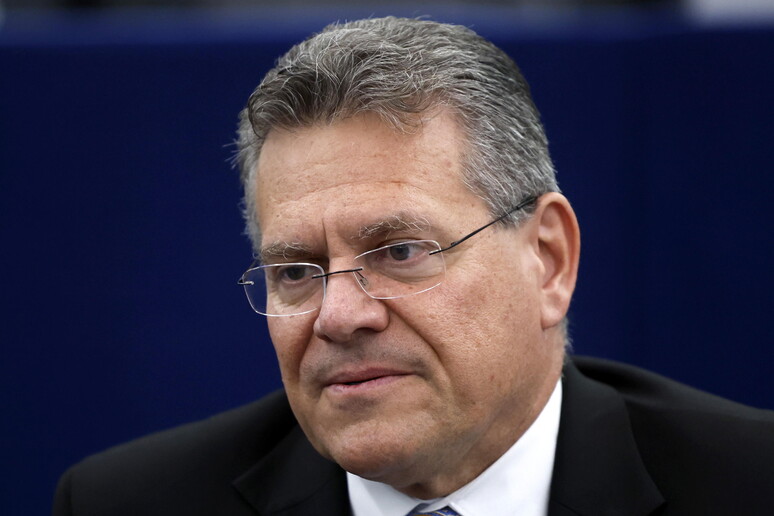The European Union is bracing for a possible trade clash with the United States as hopes for a negotiated settlement with the Trump administration continue to fade.
Following a tense visit to Washington by Trade Commissioner Maros Sefcovic over the weekend, EU diplomats say the mood in Brussels has shifted sharply. A growing number of member states, including Germany, are now pushing for concrete countermeasures. Among them is the potential activation of the bloc’s newly established anti-coercion instrument (ACI), originally designed to counter Chinese pressure tactics.
According to EU officials briefed on the matter, the European Commission informed national envoys last week that a compromise once considered within reach, one that would have allowed a 10% tariff on most EU exports to the U.S., now appears increasingly unlikely. The shift follows President Donald Trump’s recent threat to raise tariffs to 30% by August 1.
“A tariff of that magnitude would practically prohibit transatlantic trade,” Sefcovic warned during his closed-door briefing to EU diplomats. What rattled officials in Brussels even more was the lack of clarity from American negotiators. “Each interlocutor seemed to have different ideas. No one can tell (Sefcovic) what would actually fly with Trump,” one EU diplomat told Reuters.
Prospects for easing existing U.S. tariffs, 50% on steel and aluminum, 25% on cars and auto parts, also appear slim. Washington has flatly rejected a proposed “standstill” clause that would prevent any new tariffs from being introduced after a deal. The U.S. side argued that such a provision would limit the president’s authority over national security matters, the legal basis for ongoing Section 232 trade investigations into pharmaceuticals, semiconductors, and timber.
“The negotiating table remains our preferred option,” said one EU source, “but there’s growing recognition that we need to be ready to respond.” The EU already has a suspended package of retaliatory tariffs worth €21 billion on U.S. goods, with the suspension due to expire on August 6. A broader package targeting €72 billion in American exports is also under discussion.
Meanwhile, the idea of invoking the ACI is gaining traction. Introduced as a defensive tool to protect member states from foreign economic intimidation, the regulation allows the EU to retaliate against countries using trade as leverage to force policy changes. Though crafted with China in mind, the instrument is now being weighed as a potential response to Trump’s escalating tariff threats.
Retaliatory measures under the ACI could include limiting U.S. access to EU public procurement markets, worth over €2 trillion annually, curbing American investment in the bloc, weakening IP protections, and restricting sales of U.S. chemical and food products. Particularly vulnerable is the U.S. financial services sector, where Washington maintains a significant trade surplus with the EU.
France has long championed the use of the ACI. Germany, until now more cautious, has in recent days indicated it is open to the idea. “We are not there yet,” European Commission President Ursula von der Leyen said last week, emphasizing that the tool was designed “for extraordinary situations.”
To formally trigger the ACI, the Commission would need a qualified majority, at least 15 member states representing 65% of the EU population. Officials say they won’t move forward unless they are confident of securing the necessary support, but internal sources indicate that momentum is building.
Trump, for his part, has warned that any foreign retaliation against the United States will be met with immediate countermeasures.












